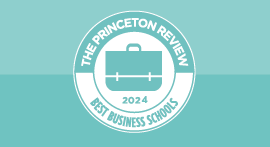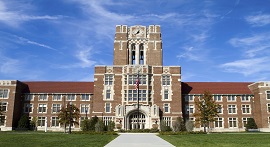Bilingual and Multilingual Education
Overview
Bilingual/multilingual education is the philosophy and practice of teaching students with low English proficiency, using students’ native languages as well as English. To instruct effectively, educators are prepared to teach most subjects as well as respond to the various sociocultural, cognitive, and linguistic needs of diverse students. Graduate programs typically provide background in linguistics, culture, research, the history and rationale of bilingual education, and methodology, and most require a student teaching practicum. Some focus solely on Spanish as the non-English language, so students interested in working with other student populations should keep this in mind. Teaching English as a Second Language (ESL) to adults usually requires a certificate but not an advanced degree.
Degree Information
One and two year master’s degrees include an M.A., M.S., or M.Ed. in bilingual/multilingual or multicultural education and the Master’s of Bilingual Education (M.B.E.). Students will most likely want a program accredited by the National Council for Accreditation of Teacher Education. Students interested in the subject but not necessarily planning on teaching may want to consider a master of arts or science degree in Child Development with multilingual focus. For those interested in pursuing careers in research and teaching education at the post-secondary level, doctorate programs are less common but are certainly an option.
Questions to Ask Yourself When Choosing a Degree Program
- Is the program in the state where I want to be certified?
- Where do graduates of the program work?
- Is the program accredited?
- Does the program adequately prepare students for state teaching certification?
- Does the program incorporate the language I know/want to teach?
Career Overview
Most with a master’s degree become teachers in K-12 classrooms. The Bureau of Labor Statistics indicates that job opportunities for teachers will be good to excellent. The effectiveness of bilingual education has been supported by many studies so the technique will most likely be adopted in more schools. Ph.D.s will most likely work as college professors, in public policy, or consulting to educational companies.
Career/Licensing Requirements
Teaching certification is conducted on a state-by-state basis. Teachers within the public school system are typically required to have at least provisional-certification.
Salary Information
According to the American Federation of Teachers, beginning teachers with a bachelor’s degree earned an average of $30,719 in the 2001–02 school year, while the estimated average salary for all teachers was $44,367. The Bureau of Labor statistics reports that the lowest 10 percent earned $24,960 to $29,850 and the top 10 percent earned $62,890 to $68,530. Post-secondary teachers average $49,040, the lowest 10 percent earning less than $23,080, and the highest 10 percent earning more than $92,430. Those who teach English as a Second Language (ESL) to adults typically earn an hourly wage of $14 to $15.
Related Links
National Association for Bilingual Education (NABE)
Professional association for bilingual educators. Site has information about the field and a great page of links to related sites.
National Clearinghouse for English Language Acquisition (NCELA)
Collects, synthesizes, and distributes information about language instruction programs for students with limited English language proficiency.
National Council for Accreditation of Teacher Education (NCATE
A national accrediting body for schools, colleges, and departments of education, NCATE determines which schools, colleges, and departments of education meet national standards in preparing teachers and other school specialists for the classroom.
United States Department of Education
Information about No Child Left Behind and other federal programs on education.
VIEW ALL Bilingual and Multilingual Education SCHOOLS BY PROGRAM
RELATED CAREERS
SAMPLE CURRICULUM
Teaching English In Bilingual/Dialectical Education
Applied Linguistics For Bilingual Education
Bilingualism And Biliteracy
Cross-Cultural Communication And Classroom Ecology
Curriculum Development In Intercultural Education
Esl Methodologies For 7-12
Esl Methodologies For K-6
Interlanguage Analysis
Literacy Development For Bilingual Students
Media-Assisted Language Learning
Methods Of Teaching In Bilingual Education
Problems In Contemporary English Grammar
Role-Playing And Simulation In Language Learning
Second Language Acquisition
Second Language Assessment
Sociolinguistics And Education
Featured MBA Programs For You
Connect with business schools around the globe and explore your MBA options.

Best Business Schools
Check out our lists of best on-campus and online MBA programs and find the best program for your career goals.
Explore Graduate Programs For You
Ranked master’s programs around the globe are seeking students like you to join their programs.
Med School Advice
Get medical school application advice, USMLE prep help, learn what to expect in med school and more.
Featured MBA Programs For You
Connect with business schools around the globe and explore your MBA options.

Best Business Schools
Check out our lists of best on-campus and online MBA programs and find the best program for your career goals.
Explore Graduate Programs For You
Ranked master’s programs around the globe are seeking students like you to join their programs.
Med School Advice
Get medical school application advice, USMLE prep help, learn what to expect in med school and more.
Featured MBA Programs For You
Connect with business schools around the globe and explore your MBA options.

Best Business Schools
Check out our lists of best on-campus and online MBA programs and find the best program for your career goals.
Explore Graduate Programs For You
Ranked master’s programs around the globe are seeking students like you to join their programs.
Med School Advice
Get medical school application advice, USMLE prep help, learn what to expect in med school and more.


